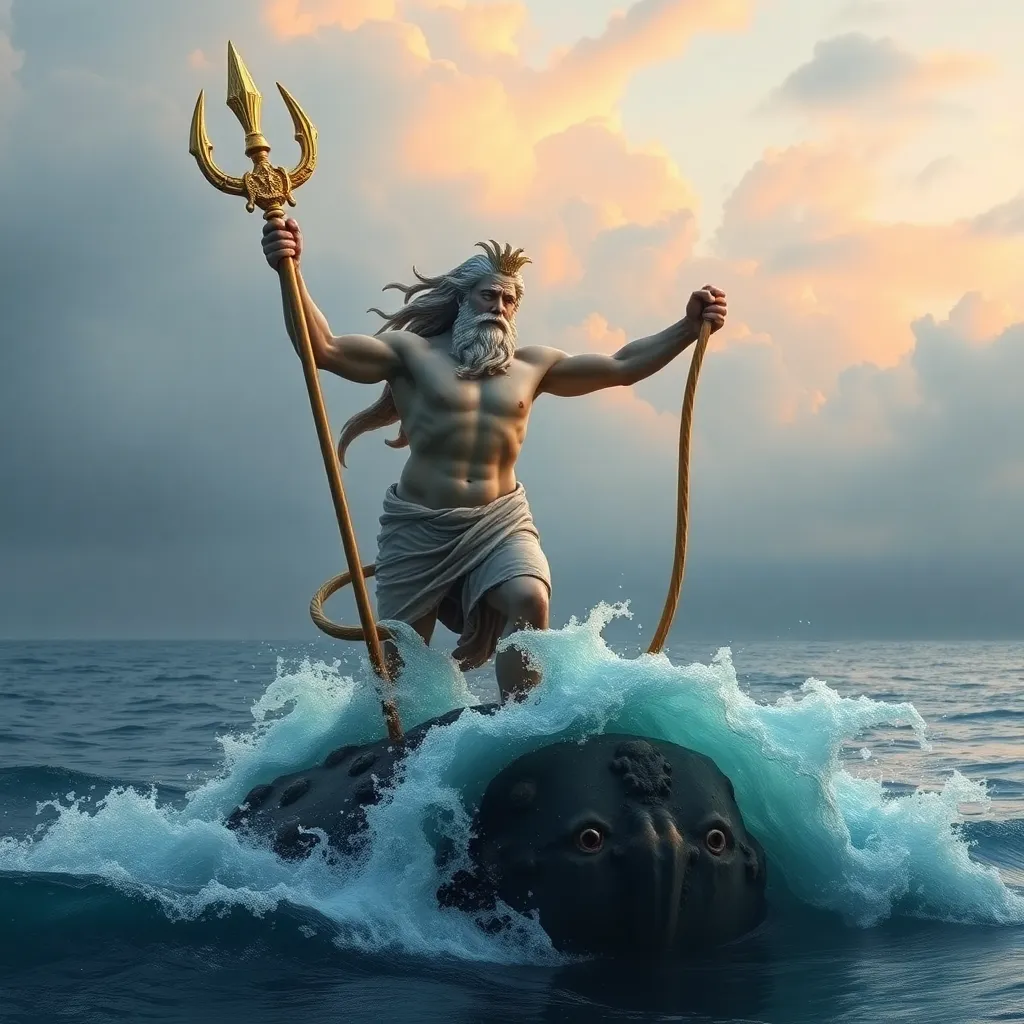Poseidon in Art: How Artists Have Depicted the Sea God
I. Introduction
Poseidon, the ancient Greek god of the sea, earthquakes, and horses, is one of the most revered deities in Greek mythology. Known for his formidable power and connection to the ocean, he has inspired countless artists throughout history. The importance of Poseidon in art lies not only in his mythological significance but also in the ways he embodies the complexities of nature, power, and human emotion. This article explores the myriad of artistic interpretations of Poseidon, tracing his evolution from ancient depictions to modern interpretations, while highlighting the cultural significance of this iconic figure.
II. Historical Context of Poseidon in Ancient Art
The origins of Poseidon in Greek mythology can be traced back to the very roots of Hellenic culture. As one of the Olympian gods, he was often depicted alongside his brothers Zeus and Hades. His character was complex, embodying both the nurturing and destructive aspects of the sea.
In ancient art, Poseidon was commonly represented in various forms:
- Pottery: Ancient Greek pottery often featured scenes of Poseidon wielding his trident, commanding the waves, or surrounded by sea creatures.
- Sculpture: Grand sculptures, such as the famous statue of Poseidon in Cape Sounion, showcased his majestic form and power.
Poseidon’s influence extended beyond Greece, affecting other ancient cultures that revered the ocean. His imagery was often used to symbolize maritime strength and the unpredictable nature of the sea.
III. Renaissance Interpretations of Poseidon
The Renaissance marked a revival of classical themes, including those of Greek mythology. Artists began to explore the stories and figures of antiquity with renewed vigor.
Notable artists who featured Poseidon in their works include:
- Antonio Canova: His neoclassical sculptures captured the idealized beauty of Poseidon.
- Giorgio Vasari: In his frescoes, Vasari depicted Poseidon as a powerful figure emerging from the sea.
The symbolism in Renaissance art often revolved around themes of power, nature, and the divine. Poseidon was portrayed as a majestic figure, emphasizing the human connection to the sea and the awe it inspires.
IV. Poseidon in Baroque and Romantic Art
The Baroque period brought dramatic representations of Poseidon, characterized by intense emotion and dynamic compositions. Artists used bold contrasts and movement to convey the god’s power over the sea.
Romantic artists were equally fascinated by Poseidon, reflecting the era’s deep connection to nature and the sublime. Key works from these periods include:
- Gottfried Schadow: His sculptures captured the turbulent essence of Poseidon, often surrounded by crashing waves.
- J.M.W. Turner: In his paintings, Turner illustrated the might of the sea, often invoking Poseidon’s spirit.
The Baroque and Romantic interpretations of Poseidon emphasized the emotional and chaotic aspects of the sea, showcasing the god’s dual nature as both a protector and a destroyer.
V. Poseidon in Modern and Contemporary Art
As we moved into the 20th and 21st centuries, the imagery of Poseidon evolved significantly. Modern artists began to reinterpret the figure, often using abstract forms or new media.
Diverse interpretations by contemporary artists include:
- Jeff Koons: His playful sculptures incorporate elements of mythology, including references to Poseidon.
- Damien Hirst: Hirst’s works often address themes of life and death, drawing parallels to Poseidon’s role in nature.
Environmental concerns have also influenced modern depictions of Poseidon. Artists now explore themes of ocean conservation, reflecting societal attitudes towards the sea and its importance in contemporary culture.
VI. Poseidon in Literature and Performing Arts
Poseidon’s influence extends beyond visual art into literature and theater. His character has appeared in countless stories, from ancient epics to modern novels.
Interdisciplinary connections between visual art and performing arts are evident in:
- Plays: The portrayal of Poseidon in theatrical productions often brings a dramatic interpretation of his character.
- Adaptations: Films and books like “Percy Jackson & The Olympians” have popularized Poseidon’s mythology for contemporary audiences.
These adaptations showcase the enduring relevance of Poseidon, as artists and writers continue to explore his symbolism and narrative potential.
VII. The Cultural Significance of Poseidon Today
Poseidon’s relevance in popular culture remains strong, as he often symbolizes humanity’s relationship with the sea. His imagery frequently appears in various forms of art, literature, and media.
The impact of Poseidon on maritime themes in art includes:
- Maritime Art: Artists frequently depict Poseidon to represent the power and mystery of the ocean.
- Environmental Art: Contemporary works often address the plight of the oceans, invoking Poseidon’s legacy as a guardian of the sea.
These artistic expressions reflect societal attitudes toward the sea, emphasizing both reverence and responsibility in our interactions with the natural world.
VIII. Conclusion
The artistic journey of Poseidon, from ancient depictions to modern interpretations, showcases the enduring legacy of this powerful deity. As artists continue to explore his character, themes of nature, power, and humanity remain prevalent.
Looking ahead, the future directions for the depiction of Poseidon in art and culture may include:
- Increased focus on environmental themes and conservation.
- Innovative interpretations using new media and technology.
Ultimately, Poseidon’s legacy in art reflects not only the richness of Greek mythology but also the ongoing dialogue between humanity and the sea.




